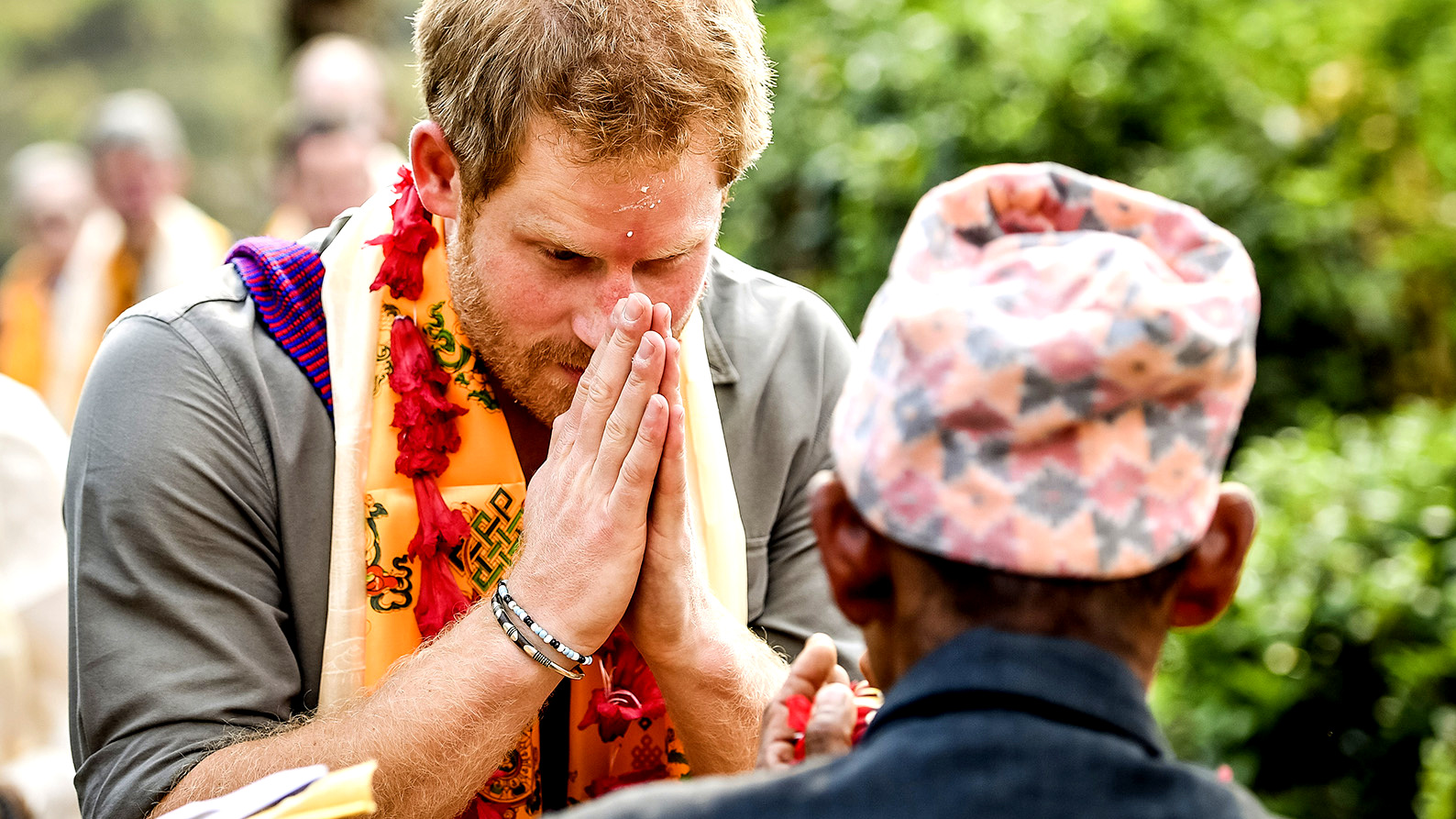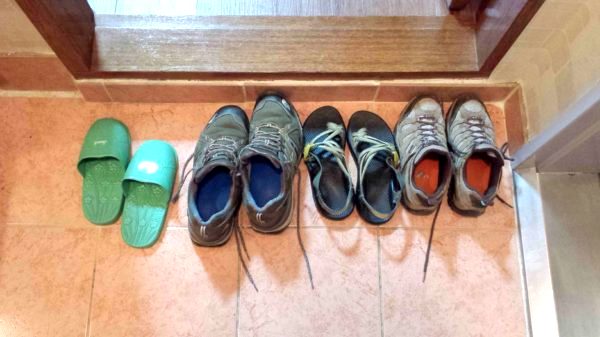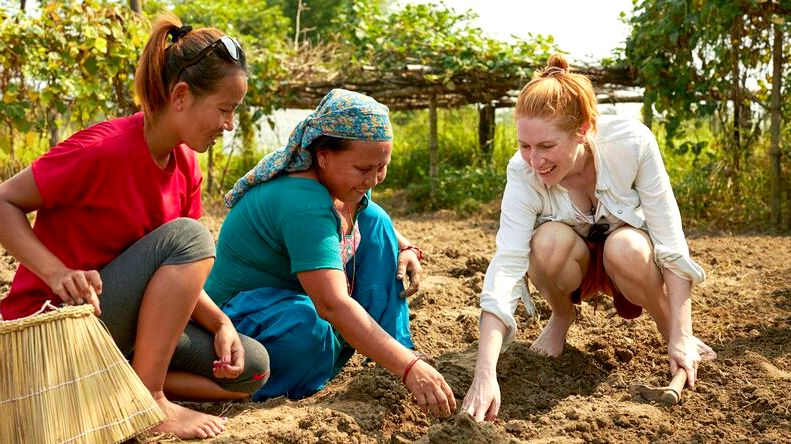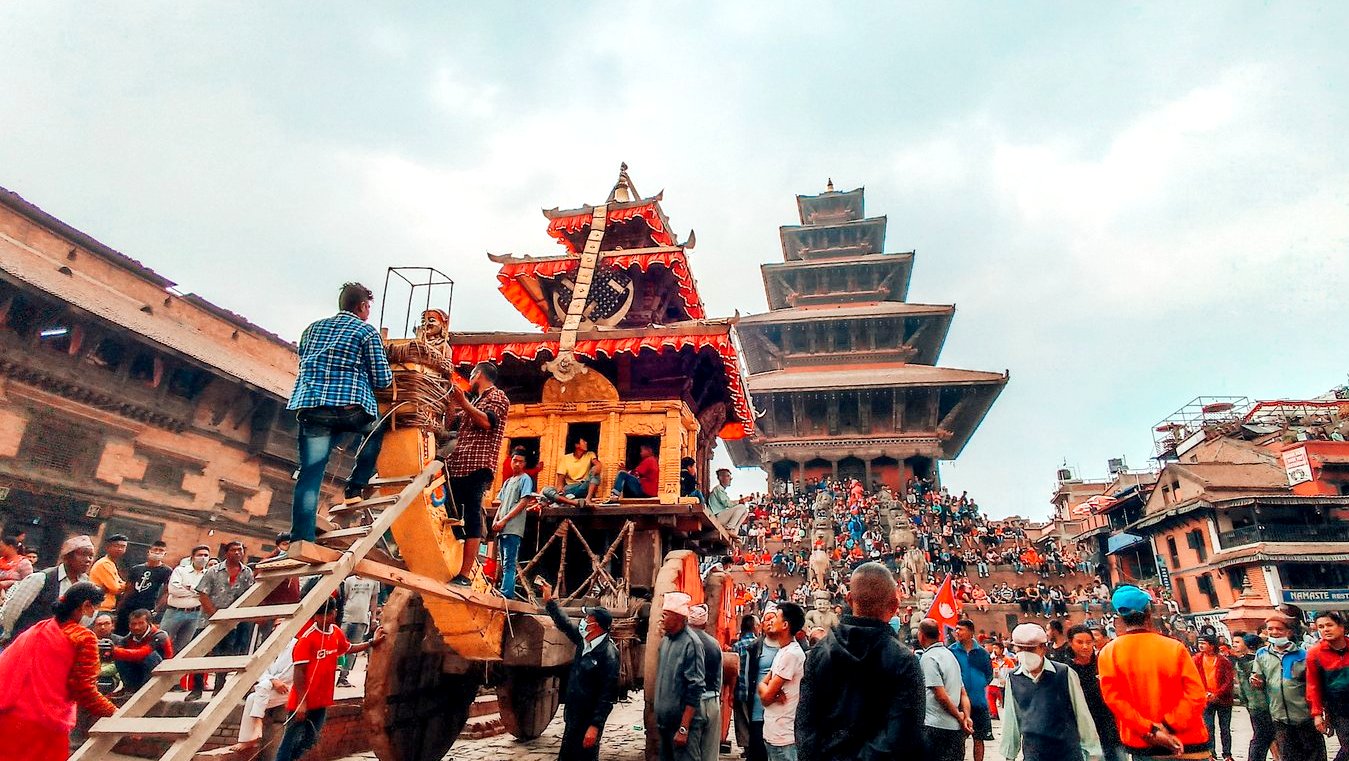Nepal, a country nestled amidst the towering peaks of the Himalayas, boasts an awe-inspiring tapestry of local customs that is as diverse as its stunning landscapes. From the bustling urban centers to the tranquil mountain villages, every corner of Nepal is infused with a deep sense of tradition and spirituality. As you traverse this enchanting land, you'll find yourself immersed in a myriad of captivating rituals that have been passed down through generations. The intertwining threads of Hinduism and Buddhism weave a rich fabric of beliefs and practices, shaping the lives of the Nepalese people.
Every sunrise brings with it the hum of devotion, as individuals and families gather at temples and shrines to offer prayers and light butter lamps, creating an ethereal glow that illuminates the spiritual significance of these acts. The vibrant and kaleidoscopic festivals of Nepal are the heartbeats of its culture. From the exuberant colors of Holi, where streets are awash with hues, to the tranquil reflections of Diwali's oil lamps, these celebrations provide a window into the deep-rooted traditions that bind communities together.

Respect for elders and guests is paramount in Nepali culture, and gracious hospitality is extended to visitors with genuine warmth. Sharing a cup of traditional tea (chiya) with locals opens doors to insightful conversations and connections that transcend language barriers. Exploring local markets reveals intricate handicrafts, such as intricately carved wooden ornaments and finely woven textiles, each reflecting the dedication and skill of artisans who continue to preserve these cherished traditions.
Nepal's customs are a living testament to its past, harmoniously interwoven with the present. Engaging with these customs is an invitation to embrace a way of life that is both ancient and contemporary, fostering a deeper understanding of the cultural mosaic that defines Nepal and leaves an indelible mark on those fortunate enough to experience it.
When you traverse Nepal's enchanting trails, your clothing choices become more than just a matter of comfort; they become a way to bridge cultural gaps and display your respect for local customs. As you venture through villages and sacred sites, the clothing you wear speaks volumes about your awareness of and consideration for the local way of life. Opting for modest attire, characterized by clothing that covers your shoulders, chest, and knees, holds significant cultural significance in Nepal.
These clothing choices extend beyond personal preferences; they reflect an acknowledgment of the cultural sensitivities held dear by the local communities. Wearing modest attire signifies your understanding of the deep-rooted traditions that form the foundation of Nepali culture. This seemingly simple gesture showcases your willingness to adapt to and honor the norms of the places you're exploring. By enveloping yourself in respectful clothing, you're not only enhancing your own experience but also forging connections with the people you encounter along the way. Your attire becomes a silent yet powerful conversation starter, allowing you to engage in cultural exchanges that go beyond words and create bonds that transcend borders. So, as you embark on your hiking journey, remember that your clothing is more than fabric; it's a bridge to understanding, an emblem of respect, and a stepping stone to authentic cultural exploration.
In the heart of Nepal's captivating landscapes, the exchange of greetings becomes an art that transcends mere communication—it's a profound acknowledgment of the country's rich cultural heritage. The traditional Nepali greeting, "Namaste," is more than a simple salutation; it's an invitation to connect on a deeper level. When you utter this word, you're not just saying hello; you're extending a bridge of respect and understanding to the people you meet along your journey.

However, the power of "Namaste" doesn't end with its utterance; it's a gesture that can be elevated through a slight bow and a genuine smile. This subtle combination carries the weight of appreciation for the local culture, a symbol of your recognition of the traditions that shape the lives of those you encounter. With each "Namaste," you're engaging in a silent dialogue that goes beyond language barriers, and in that moment, you're forging a connection that spans continents. So, as you traverse Nepal's trails, remember that "Namaste" is your key to unlocking the doors to cultural exchanges that are as enriching as the landscapes around you. It's more than a word—it's an embodiment of respect, a catalyst for connections, and a testament to the shared human experience.
Nepal's stunning vistas and cultural marvels beckon to be captured, but amidst the allure of the lens, lies a fundamental principle of cultural sensitivity: seeking permission before taking photographs. While the allure to preserve the breathtaking landscapes and intricate cultural landmarks is irresistible, it's imperative to pause and remember the essence of respect that underlies this gesture.
Before you click that shutter, take a moment to engage in a cultural exchange that goes beyond the camera. Approach locals with a warm smile and an inclination to connect, and then gently inquire if they're comfortable with being photographed. This simple act is an embodiment of the mutual respect that lies at the heart of cultural understanding. Additionally, when it comes to religious sites and private properties, always extend the courtesy of asking for permission. By seeking permission, you're not just capturing visuals; you're capturing the spirit of responsible travel and a genuine appreciation for the people and places that make Nepal an extraordinary destination.
So, as you navigate Nepal's mesmerizing landscapes with your camera in hand, remember that each photograph you take holds a story, a connection, and an opportunity to foster cultural appreciation. Through your lens, you're not just capturing memories; you're capturing the essence of a journey that's rooted in respect and cultural enrichment.
In Nepal, the act of removing your shoes before entering a home, temple, or monastery is more than just a practical custom; it's a symbol of cultural mindfulness and a tangible expression of respect. As you tread the paths of this enchanting land, you'll find that this seemingly simple gesture carries deep significance and forms a bridge between you and the local way of life.

By slipping off your shoes before crossing the threshold, you're not merely adhering to tradition; you're demonstrating your recognition of the sanctity of the spaces you're entering. This practice is an embodiment of your willingness to embrace the customs that shape daily life for the Nepali people. As the dust of the trails falls away, you're also shedding the barriers of unfamiliarity and connecting with the rhythm of a culture steeped in traditions.
Ultimately, removing your shoes isn't just a practical consideration to keep interiors clean; it's a tactile representation of your awareness and respect for the nuances that define Nepal's cultural landscape. With each step, you're leaving behind more than footprints; you're imprinting your journey with a sense of reverence and a commitment to cultural harmony.
As you traverse the remarkable terrain of Nepal, you may encounter the profound beauty of religious ceremonies and prayers. In these moments, the path to cultural sensitivity lies in the art of observance—a practice that demands both distance and respect. When you chance upon these sacred moments, consider it an opportunity to deepen your connection with the local culture and spirituality.
Maintaining a respectful distance is paramount. By doing so, you're not just honoring the solemnity of the occasion; you're showing your awareness of the significance of these rituals in the lives of the people around you. While modern technology enables us to capture every instant, it's crucial to silence your devices and cameras. This gesture of turning off distractions echoes your commitment to preserving the sanctity of the moment and your dedication to a harmonious cultural exchange.
Each religious ceremony or prayer is a window into Nepal's soul—a glimpse of the spiritual essence that threads through its diverse communities. As you stand on the periphery, you're participating in an unspoken dialogue that spans cultures and bridges divides. By embracing the role of an observer with humility and reverence, you're not just a spectator; you're a participant in the shared human experience that transcends borders and reverberates through the ages.
A meal shared in a local home transcends nourishment; it's a cultural exchange that bridges continents and fosters connections. As you're welcomed into a Nepali home for a meal, the nuances of table manners become a canvas upon which you can paint your respect for the local culture. With each bite, you're not just tasting flavors; you're participating in a tradition that carries the essence of Nepal's way of life.

Observe how the locals eat, for their actions are not just rituals; they're a testament to the respect they hold for their food and the company they share it with. Using your right hand for eating is more than just a practicality; it's an acknowledgment of cultural norms that govern the act of dining. By refraining from wasting food, you're not just conserving resources; you're displaying your appreciation for the effort that goes into every meal and your understanding of the value that food holds in the Nepali context.
At the table, every morsel becomes a conversation, every gesture an exchange. By embracing the table manners of the host, you're not just partaking in a meal; you're immersing yourself in the intricacies of Nepali life. These moments are a feast for your senses and a feast for your cultural understanding—a testament to the profound connections that can be forged through something as simple and universal as breaking bread together.
As you navigate the awe-inspiring landscapes of Nepal, remember that your presence is not just an exploration; it's an interaction with the intricate balance of nature. Preserving the pristine beauty of Nepal's environment isn't just an act of responsibility; it's a profound expression of respect for the culture that holds this land dear. Embracing the "Leave No Trace" philosophy isn't just a guideline; it's an opportunity to leave a positive mark on the natural world and the communities it sustains.
Imagine each trail as a thread woven into a larger ecological tapestry. By sticking to designated paths, you're contributing to the preservation of delicate ecosystems. Every piece of trash you pack out is a gesture that echoes your commitment to honoring the land's purity. Just as you tread lightly, refrain from disturbing plants and animals, for they too are threads that weave the vibrant fabric of Nepal's environment.
In every footstep you take, there's an invitation to create a harmonious symphony between human exploration and nature's sanctity. By following these principles, you're not just preserving the land; you're also upholding the values that the Nepali culture holds dear—a connection with nature that's as deep as the mountains themselves. As you venture forth, remember that your footprints can be gentle, your impact positive, and your journey a testament to the power of responsible cultural exploration.
In the heart of Nepal's vibrant communities, there exists a world of stories waiting to be shared—a world that can be unlocked through the simple yet powerful acts of listening and learning. Engaging with locals isn't just a conversation; it's a bridge that connects you to the essence of Nepal's rich culture. By asking questions about their way of life, traditions, and beliefs, you're opening the doors to a treasure trove of insights.

Approach these conversations with an open heart and a genuine curiosity that extends beyond the surface. As you inquire about their stories, you're acknowledging the uniqueness of their experiences and showing your respect for their perspectives. But it doesn't end with the questions; being an active listener is equally vital. Through your attentive presence, you're acknowledging the importance of their narratives and affirming the value of their cultural heritage.
In these exchanges, you're not just a traveler; you're a student of life, a seeker of connections. By embracing the role of a learner, you're sowing seeds of mutual understanding that transcend geographical boundaries. So, as you converse with the people who call Nepal home, remember that your inquiries aren't just words; they're conduits for empathy, gateways to shared experiences, and the threads that weave the fabric of cross-cultural appreciation.
In the heart of Nepal's communities lies a unique opportunity to foster connections and empower local economies. Your choices as a traveler hold the power to make a lasting impact that reaches far beyond your journey's end. By opting for locally made crafts and products, you're not just acquiring tangible mementos; you're investing in the livelihoods of the artisans who pour their heart and soul into their creations.
Choosing to stay in locally owned accommodations isn't just about comfort; it's a conscious choice that speaks volumes about your commitment to creating authentic connections. As you step beyond the doors of a guesthouse or homestay, you're stepping into a world of shared experiences—a world that welcomes you as a guest and, in turn, offers you a window into the daily lives of the people who call Nepal home.
These choices aren't just transactions; they're a celebration of resilience, culture, and community. By supporting the local economy, you're contributing to the preservation of traditions and creating a cycle of empowerment that benefits generations to come. Your journey becomes a tapestry woven with the threads of compassion and camaraderie, a testament to the ripple effect of responsible and meaningful travel. As you explore Nepal, remember that each purchase, each stay, and each interaction has the potential to transcend transactional boundaries and become an integral part of the vibrant cultural mosaic.
When embarking on your journey through Nepal, your guide is more than just a companion—they're a gateway to cultural immersion and a treasure trove of local insights. Following their lead isn't just a practical consideration; it's a pathway to navigating cultural norms with grace and authenticity. Your guide is your cultural compass, ready to steer you through the nuances that shape Nepal's way of life.

Local guides hold a wealth of knowledge about the customs, traditions, and sensitivities that define the region. By heeding their guidance, you're not just avoiding cultural missteps; you're embracing a profound opportunity to learn, understand, and respect the local way of life. From understanding the appropriate attire for religious sites to knowing the proper etiquette during interactions, your guide is your bridge to seamless cultural integration.
As you traverse Nepal's landscapes, remember that your guide is more than a source of information; they're a cultural conduit, an interpreter of local norms, and a guardian of meaningful exchanges. By placing your trust in their expertise, you're enriching your journey with the depth that only comes from walking in the footsteps of those who know the terrain intimately. Through their guidance, you're not just exploring Nepal; you're experiencing it in a way that resonates with the rhythms of the land and the hearts of the people who call it home.
Before You Go
- Valid Passport and Visa (Check entry requirements)
- Travel Insurance (including medical and evacuation coverage)
- Necessary Permits (e.g., TIMS card, National Park Entry Permit)
- Flight Tickets and Itinerary
- Vaccination and Health Preparations (consult your doctor)
- Emergency Contact Information (family, embassy, local contacts)
- Local Currency (Nepalese Rupees) and Small Denominations
Hiking Gear
- Comfortable Hiking Boots/Shoes with Good Traction
- Appropriate Hiking Clothing (layers for varying temperatures)
- Rain Jacket or Waterproof Outer Layer
- Warm Hat, Gloves, and Buff/Scarf
- Sunglasses and Sunscreen
- Trekking Poles (if preferred)
- Daypack with Rain Cover
- Water Bottle or Hydration System
- Snacks/Energy Bars
- Headlamp or Flashlight with Extra Batteries
- Personal Medications and First Aid Kit
- Insect Repellent
- Multi-tool or Swiss Army Knife
- Camera and Accessories (respect local photography guidelines)
- Portable Charger and Power Bank
Documentation and Communication
- Printed Copies of Permits, Passport, and Travel Insurance
- Mobile Phone with Local SIM Card (for emergencies)
- Maps and Trail Information
- GPS Device or Compass (if needed)
- Notebook and Pen
Cultural and Etiquette Considerations
- Modest Clothing (especially for entering villages and religious sites)
- Local Currency for Tips and Purchases
- Small Gifts for Homestays or Interactions with Locals
- Cultural Knowledge (basic Nepali greetings, customs, and practices)
Leave No Trace
- Trash Bags (for packing out your trash)
- Reusable Water Bottle (minimize single-use plastic)
- Eco-friendly Toiletries and Personal Care Items
- Respect for Wildlife and Natural Habitats (observe from a distance)
Guided Treks
- Confirmation of Guide/Porter Arrangements
- Local Guidebook or Information Provided by the Trekking Company
- List of Essential Contact Numbers (trekking company, local emergency services)
Optional Items
- Entertainment (book, journal, playing cards)
- Trekking Snacks (chocolates, nuts, dried fruits)
- Personal Comfort Items (earplugs, travel pillow)
Remember that this checklist is a general guide. Your specific requirements may vary based on the trekking route, season, and personal preferences. Always do thorough research and consult with your trekking company for specific recommendations based on your itinerary and needs.
- Choose the Right Trail: Research and select a trek that matches your fitness level, experience, and preferences. Consider factors like elevation, duration, and difficulty.
- Physical Fitness: Hiking in Nepal can be physically demanding due to varying terrains and altitudes. Consult a doctor and engage in regular exercise to ensure you're adequately prepared.
- Acclimatization: Altitude sickness can be a concern in high-altitude areas. Plan for gradual acclimatization by including rest days in your itinerary and ascending slowly.
- Weather and Seasons: Nepal experiences different trekking seasons. Spring (March to May) and autumn (September to November) are popular due to stable weather. Be prepared for temperature fluctuations and possible rain or snow.
- Permits and Regulations: Check the required permits for the chosen trek and follow local regulations. These may include TIMS cards, National Park Entry Permits, and restricted area permits.
- Travel Insurance: Ensure your travel insurance covers hiking at high altitudes and includes medical evacuation. Confirm the coverage details and have copies of insurance documents.
- Guided vs. Independent: Decide whether to trek with a guided group or independently. Guides provide local expertise, support, and ensure safety, especially in remote areas.
- Equipment and Gear: Pack appropriate gear, clothing, and equipment, including sturdy hiking boots, warm clothing, rain gear, and a good quality backpack.
- Training and Skills: If you're planning a technical trek, such as peak climbing, consider getting training and certification in mountaineering skills.
- Budget: Plan your budget considering trekking permits, accommodation, meals, guides/porters (if applicable), transportation, and additional expenses.
- Local Culture and Etiquette: Familiarize yourself with local customs, traditions, and etiquette. Learn basic Nepali greetings and respect cultural norms.
- Environmental Responsibility: Commit to responsible trekking practices. Practice Leave No Trace principles, minimize waste, and respect wildlife and natural habitats.
- Safety Measures: Carry essential items such as a first aid kit, water purification tablets, and a communication device (local SIM card or satellite phone) for emergencies.
- Accommodation: Plan accommodation in advance, especially during peak seasons, and be prepared for basic facilities in remote areas.
- Communication: Inform family or friends about your trekking plans, itinerary, and emergency contacts. Keep a copy of important documents, like your passport and permits.
By carefully considering these factors and preparing thoroughly, you'll be better equipped to enjoy a safe and enriching hiking experience amidst Nepal's breathtaking landscapes.
In the embrace of Nepal's awe-inspiring landscapes, a journey with Luxury Holiday Nepal transcends the ordinary, evolving into an extraordinary tapestry of adventure and cultural resonance. As the trails lead us through this enchanting land, we not only traverse its majestic peaks but also immerse ourselves in the vibrant mosaic of its traditions and customs. With open hearts and a deep respect for the local way of life, our travels become more than just explorations—they become pathways to connection and understanding. By partnering with Luxury Holiday Nepal, we're not only embarking on an adventure; we're fostering a legacy of meaningful interactions, where every step taken echoes with the shared appreciation for cultures, communities, and the profound beauty that Nepal offers.
Q. Why is it important to respect local customs while hiking in Nepal?
A. Respecting local customs shows cultural sensitivity, fosters positive interactions, and contributes to a harmonious travel experience. It helps build bridges of understanding and promotes responsible and ethical tourism.
A. "Namaste" is more than a greeting; it's a gesture of respect and acknowledgment. Accompanied by a bow and a smile, it's a powerful way to show appreciation for the local culture and initiate meaningful connections.
A. Wearing clothing that covers your shoulders, chest, and knees is considered respectful, especially when passing through villages and religious sites. Opt for breathable and lightweight fabrics that are comfortable for hiking while adhering to cultural norms.
A. Engage with genuine curiosity and ask questions about their culture, traditions, and way of life. Be an active listener and show interest in their stories, experiences, and perspectives.
A. Purchase locally made crafts and products, and opt for accommodations owned by local communities. This supports local businesses and contributes positively to the economy, while also fostering connections with the community.
A. Follow Leave No Trace principles by packing out your trash, sticking to designated trails, and avoiding disturbance to plants and animals. Minimize your use of single-use plastics and respect the natural environment.
A. Always ask for permission before taking photos of locals, religious sites, or private properties. This shows respect for privacy and cultural sensitivity, ensuring that you capture moments in an ethical and responsible manner.
A. Observe how locals eat and use your right hand for eating. Avoid wasting food, as it's a gesture of respect for the host and local dining customs.
A. Maintain a respectful distance, avoid interrupting, and silence your devices and cameras. This shows respect for the sacredness of the moment and allows you to observe without causing disruptions.
A. Yes, following the guidance of a local guide is advisable. They can provide valuable insights into cultural norms, help you navigate sensitive situations, and ensure you behave appropriately throughout your journey.
Everest Helicopter Landing Tour with Breakfast - All Inclusive
Seven World Heritage Day Tour of Kathmandu Valley
Private Tour Nagarkot Sunrise View and Day Hiking from Kathmandu
Chandragiri Cable Car Tour in Kathmandu - Private Half-Day Tour
Kathmandu Sightseeing Tour by Helicopter
Upper Mustang Helicopter Tour
Private Kathmandu Sightseeing Tour - 4 UNESCO World Heritage Sites
Everest Base Camp Helicopter tour with landing from Kathmandu
If you need any further information, please contact us, Email: [email protected], Phone: +977- 985 100 5129 (WhatsApp)




